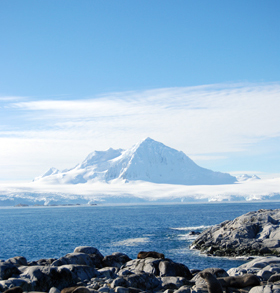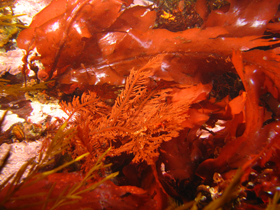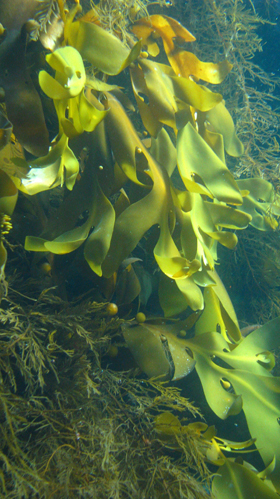
Light is a pretty essential source of energy that most people don’t often think about until seasons change. At Palmer Station we have long days with high light levels when we begin our field season (late summer) and the sun goes down after 10 PM. Because of this we were lucky enough to see the green flash two nights in a row this year after work while the ARSV Laurence M. Gould was still here. Now the night is coming faster, and fall is quickly settling in. Near the end of our field season in June, day length will be about four hours of daylight much of which is not direct sunlight.
Many of the creatures down here, not just us humans, have circadian rhythms (daily patterns) and annual cycles. As biologists we like to describe these as life history characteristics, and these encompass a variety of traits that any species may express including growth, reproduction, death, and many metabolic processes like digestion and photosynthesis. Many of these are correlated with light especially in Antarctic algae (I consider seaweed a derogatory term). In fact many polar algae species reproduce, grow and die in time with the light level. So rad.
As Julie mentioned in her first blog I was able to attend a photosynthesis course in Mexico for a few weeks prior to leaving for Palmer Station. We learned a lot about light and photosynthesis on coral reefs, so now I am trying to use that information to carry out some studies on the algae that grow and are very abundant down here. Like the red algae in my underwater image below.

In order to look at light and how it affects photosynthetic organisms, you need a way to measure photosynthesis. People have developed a variety of methods which measure production of oxygen or carbon compounds (both products of photosynthesis), but we will use a fluorometer. It is specifically a pulse amplitude modulated fluorometer (PAM for short) and it measures the fluorescence which is like the algae having a mirror, bouncing energy right back at a source of energy. You can use this to measure how much energy is then moving through photosynthesis to create energy for the algae. It’s like shooting ray guns at algae for science. Also rad.

Algal communities grow and sometimes dominate the shallow marine areas (<90 feet deep) around the western Antarctic Peninsula like in this picture here. This is amazing to me mostly because of the extreme light conditions. There are times when light levels are very high which can be bad for photosynthetic organisms (think of a bad sunburn from too much UV exposure), but also times when light is non-existent because of the time of year and sea ice and snow. So not only are algae using light levels to adjust their life histories, but they have been able to adapt to these great light extremes.
Recently we brought a few long stipe Ascoseira mirabilis back to Palmer Station from the Lemaire Channel, which Chuck mentioned in his blog. With these individuals I was able to do look at how efficient the species or ecotypes are at using low levels of light to produce their own energy stores. Soon I’ll begin looking at the same processes in two species of other canopy brown algae, Desmarestia menziesii and D. anceps, which I will use in our climate change experiment.
PAM is definitely a useful tool for studying algae, especially because it can give you an idea about how healthy the algae are once you have a baseline ). For this reason, we are also planning to describe some basic photosynthetic parameters of common algae like Cystosphaera jacquinoti and D. anceps (shown right in another of my underwater pics) with PAM. She’s a good girl.
Sincerely,
PAM and Science Girl on Ice Island (this one’s for you James).